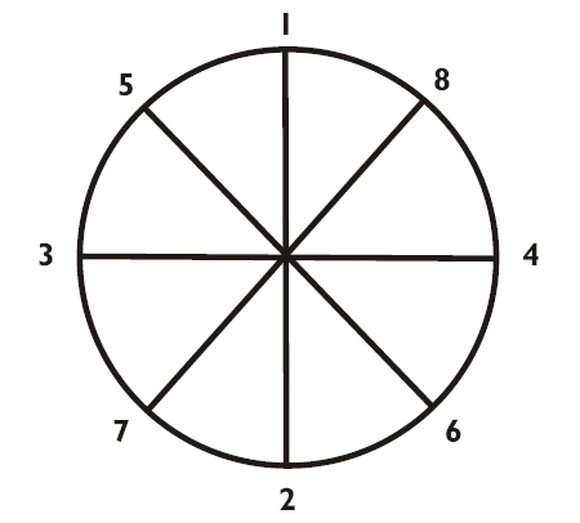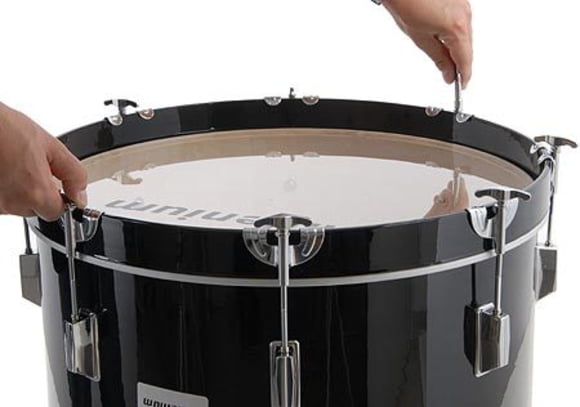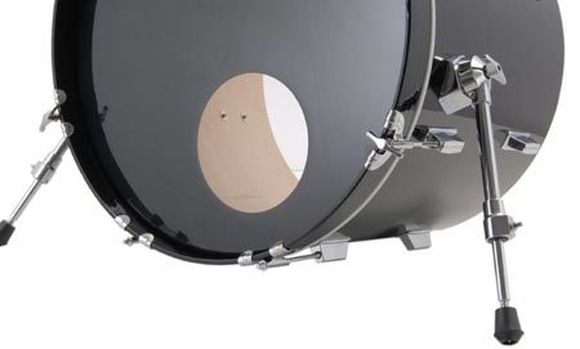7. Tuning
Every shell has, depending on diameter and depth, material and thickness, a resonant tone. The aim is to bring out a particular tone where it is loudest and has the most resonance. In many cases this is the lowest possible tone with the drum head just about having reasonable tension. There are major differences between tuning toms, snares and kick drums.
The range is often, for harmonic reasons, 3 notes between batter and resonant side.
The differences between batter and resonant heads are:
- Both tuned to the same note highest possible volume and resonance.
- Resonant head tuned higher more penetrating, transparent sound
- Resonant head tuned lower more low end with sustain boooom.
TIP: If the shell resonates with too much sustain, it helps to slightly detune the resonant head.
And this is how its done:

The drum head sits evenly and there is no visible slack. Now you take your finger and tap roughly 3cm inside the tension rod you were just working on. Adjust the tension rods cross wise and alternating the tapping finger follows.

At one point the drum head starts to resonate thats you lowest possible tone. However, the drum head now has relative little tension. The rods are now adjusted with 1/8 turns not more ! This is done until the desired tone is reached. Always check the pitch from inside the lug with your finger. The tone has to be the same at each and every lug. At the end you can take the butt end of the stick instead of the finger for control.
You always correct the pitch by tightening the rod similar to tuning a guitar. If you have gone to far, loosen the rod a bit and finish with a slight clock wise turn to take the play out of the screw.
TIP: Starting to tune the resonant side has the advantage that you can fully concentrate on the resonant tone. When next you do the batter side it is easy to work from on top.
Tuning of the snare
The snare drum is different in so far as it needs sufficient tension on the resonant side for the snares to work properly. The resonant head is not tuned for overtones either this way a dryer sound is achieved. The Batter side has to have enough tension for a realistic rebound. The classic tuning for the snare is C.
And just like toms always tighten the rods cross wise.
Tuning of the kick drum
In a kick drum you are looking for a low end punch, more or less dampened to take the sustain and overtones out. To achieve this it is in many cases enough to tighten the drum head to the point where the folds are just disappearing. It is rather a sound than a tone you are looking for. An internal dampener a cushion for instance - does the rest.

The resonant head is adjusted in the same way. The front head of a kick drum either has a hole or not. The hole serves on one hand as vent for the substantial amount of air a kick drum is moving. On the other hand it is the port for mic-ing the drum. Drum heads with up to 6 hole do have resonance. In particular bigger central positioned holes reduce the drum head to a logo bearer.
TIP: It is nice to have your custom logo on your front head. The head gets a bit heavier by this but the sound does not really change. Check the internet for custom skins.
Your Contacts
Product Highlights
-
Drumhead Sets
-
12" Snare Drum Heads
-
20" Bass Drum Heads
-
13" Snare Drum Heads
-
22" Bass Drum Heads
Recommended categories
Do you like what you're seeing?






